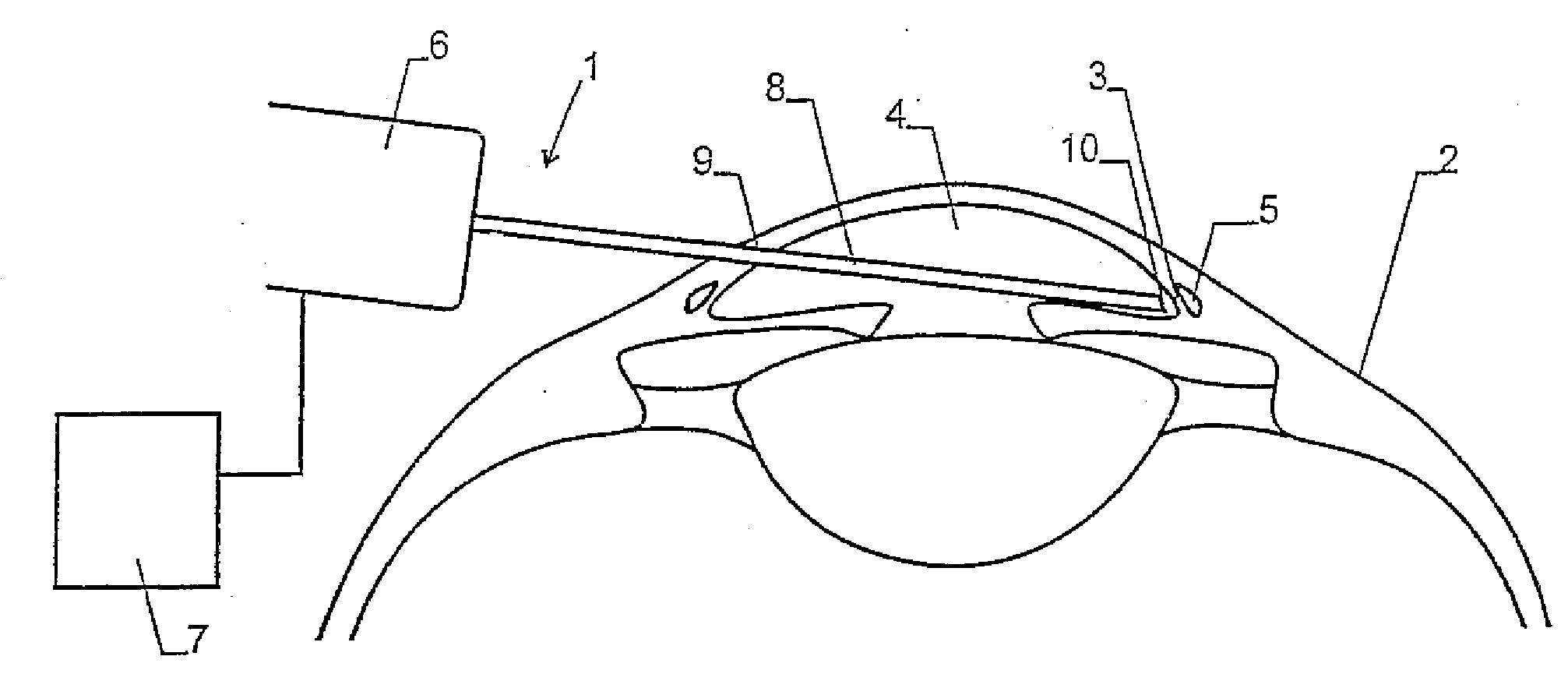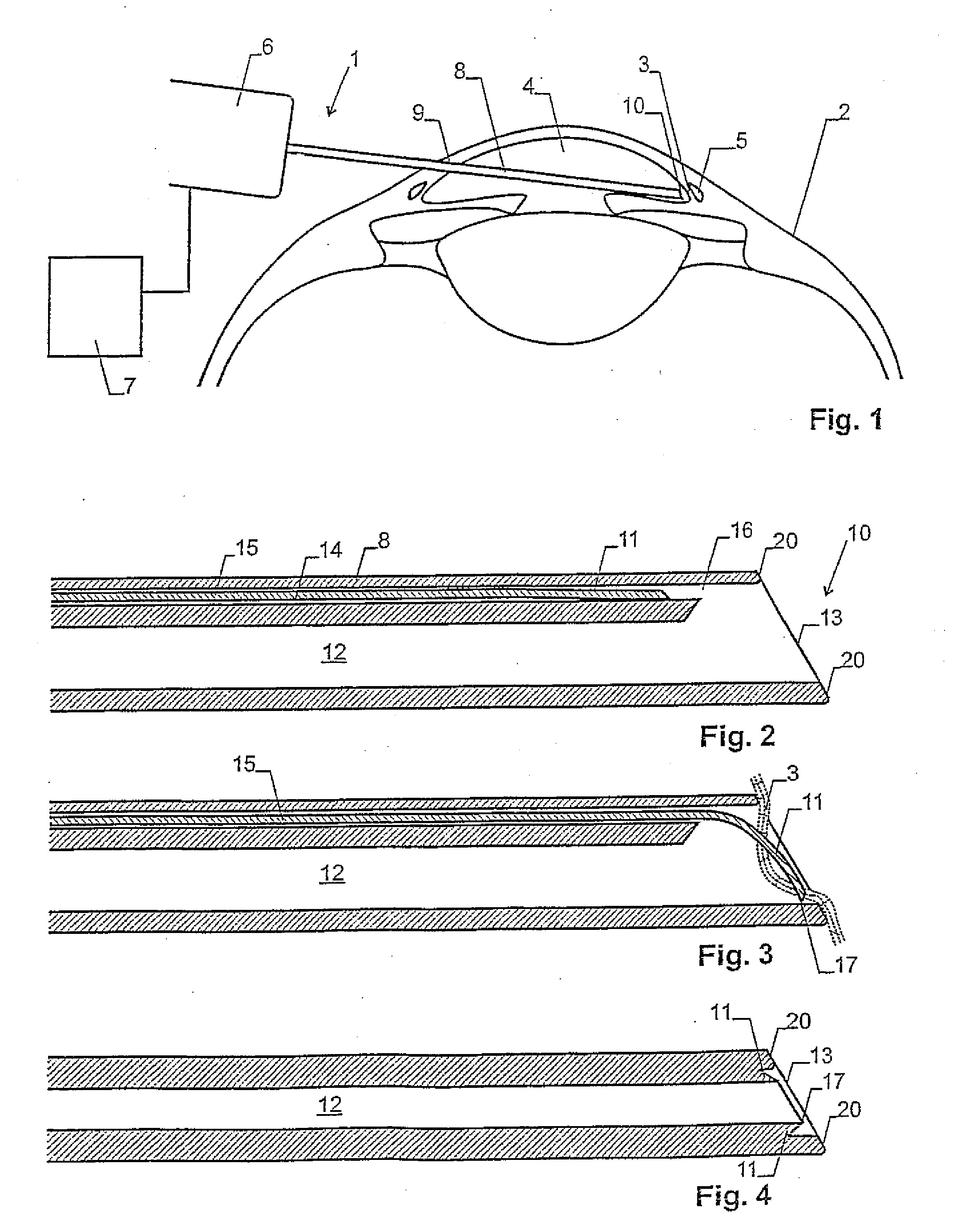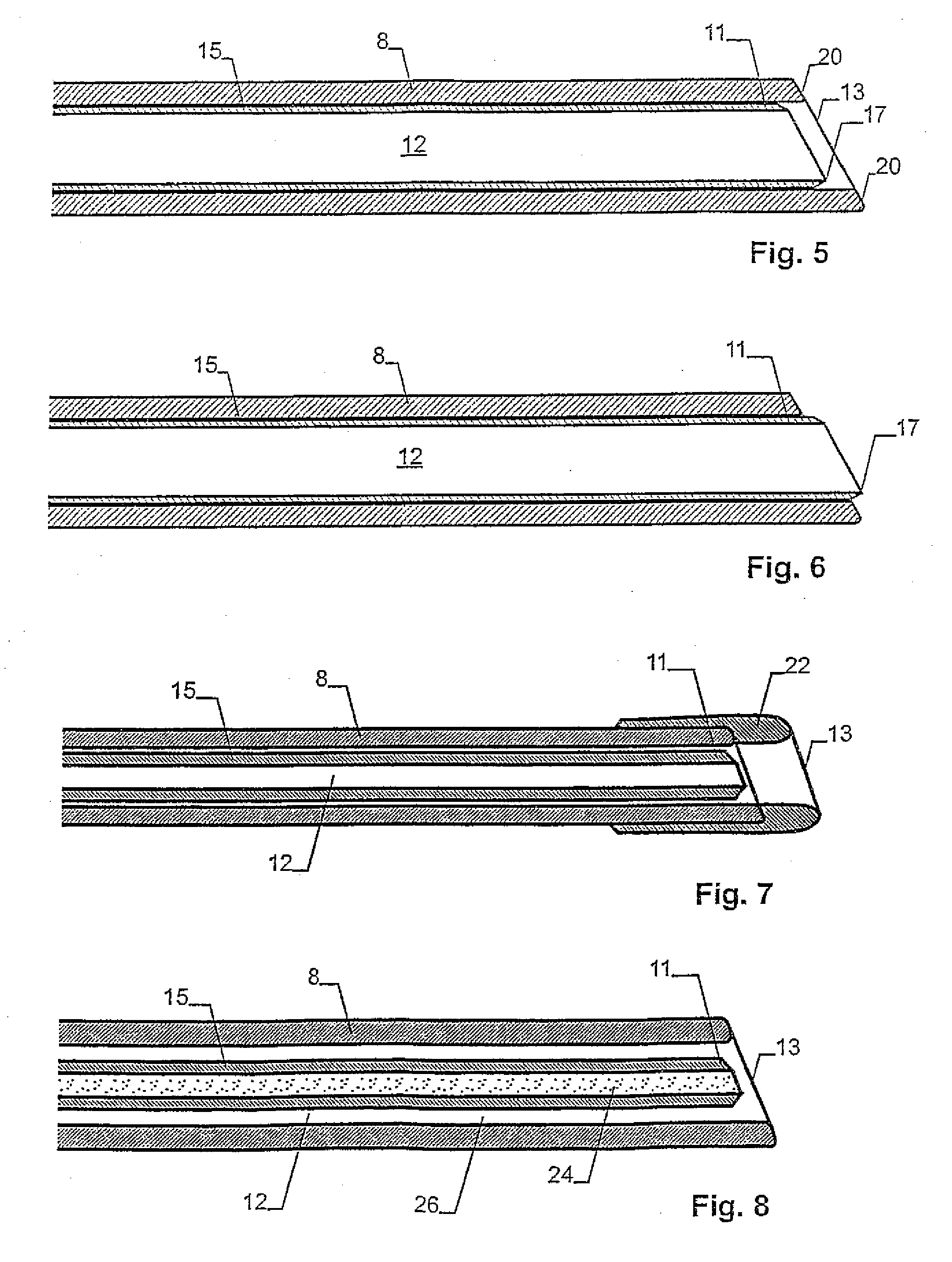Device and method for the performance of ophthalmological operations
a technology for ophthalmological operations and devices, applied in the field of devices and methods for treating glaucoma, can solve the problems of not ensuring that only the separating tissue between the anterior aqueous chamber and the schlemm's canal is destroyed, and the destruction of the tissue behind the schlemm's canal, so as to avoid accidental tissue injury
- Summary
- Abstract
- Description
- Claims
- Application Information
AI Technical Summary
Benefits of technology
Problems solved by technology
Method used
Image
Examples
second embodiment
[0030]the device according to the invention is depicted in FIG. 4. In this embodiment the separation means or the cutting tool 11, respectively, are formed by a circular or oval cutting edge 17, respectively, which extends along the inner wall of suction channel 12. The cutting edge 17 is arranged closely to the orifice 13 or at the orifice 13. When separating tissue 3 is sucked into the orifice 13 it meets the cutting edge 17 and is cut off.
third embodiment
[0031]the device according to the invention is depicted in FIGS. 5 and 6. In this embodiment the cutting tool 15 is formed by a tube section which is arranged in the suction channel 12. The distal end of the tube forms the cutting tool 11 with cutting edge 17.
[0032]Preferably the cutting device 15 or the cutting tool 11 is longitudinally displaceable and can be moved from the neutral position shown in FIG. 5 to the separation position shown in FIG. 6. In the neutral position the cutting edge 17 is behind the orifice 13, in the separation position the cutting edge 17 protrudes beyond the orifice 13 up to a given distance. The distance corresponds approximately to the typical width of the separating tissue 3. In this manner, separating tissue which is sucked in by the orifice 13 can be cut off.
[0033]It is conceivable that the cutting device 15 is rotatable about its longitudinal axis so that it can be turned at least over a limited angular range compared to the probe 8. This allows to...
first embodiment
[0036]The suction channel 12 can have a round or square crossection. In particular in the first embodiment according to FIG. 2 and FIG. 3 the crossection is at least in the area of the distal end 10 rather square so that the cutting tool can glide over the complete crossection while in the embodiments according to FIGS. 4 to 6 the crossection is preferably rather round or elliptic.
[0037]In a further embodiment as shown in FIG. 7, a sleeve 22 is arranged as support device at the distal end of the probe 8. It is made of a material which is more deformable than the probe and allows a more tight seal of the suction channel 12 towards the tissue.
[0038]In the application of the device described herein, the distal end 10 of probe 8 is guided through the anterior aqueous chamber 4 to separating tissue 3 whereby the cutting tool 11 of the embodiments according to FIG. 2 and FIG. 3 or FIGS. 5 and 6, respectively, is at this stage in neutral position. Then, a piece of separating tissue is suck...
PUM
 Login to View More
Login to View More Abstract
Description
Claims
Application Information
 Login to View More
Login to View More - R&D
- Intellectual Property
- Life Sciences
- Materials
- Tech Scout
- Unparalleled Data Quality
- Higher Quality Content
- 60% Fewer Hallucinations
Browse by: Latest US Patents, China's latest patents, Technical Efficacy Thesaurus, Application Domain, Technology Topic, Popular Technical Reports.
© 2025 PatSnap. All rights reserved.Legal|Privacy policy|Modern Slavery Act Transparency Statement|Sitemap|About US| Contact US: help@patsnap.com



